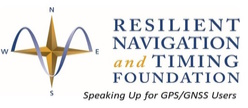By: Jeremy Hsu
IEEE Spectrum
22 September 2015
GPS technology can do much more than guide drivers and smartphone users on unfamiliar streets. The Global Positioning System’s satellites carry expensive atomic clocks that also provide synchronized timekeeping for cell phone networks, major financial institutions, and power grids across the world. But a report by the U.S. government’s “master clock” keepers finds that a ground-based “TimeLoc” technology can provide even better timekeeping accuracy within crowded cities, indoor spaces, and underground—places where GPS signals have trouble reaching.
The TimeLoc technology made by the Locata Corp. represents a wireless synchronization procedure based on radio signals sent between “LocataLite” transceivers on the ground. Recent testing by the U.S. Naval Observatory (USNO), a scientific agency that controls the U.S. “master clock” used for coordinating the GPS satellites, found that the LocataLite transceivers could synchronize across kilometers of Washington, D.C.’s urban environment with timing differences of less than 200 trillionths of a second. By comparison, GPS typically is less accurate, with synchronicity on the order of about 100 billionths of a second difference. Still, the ground- and space-based technologies could work together to deliver GPS-style location and timekeeping almost anywhere imaginable.

